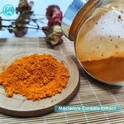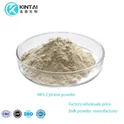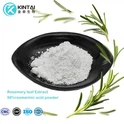Licorice powder, derived from the root of the Glycyrrhiza glabra plant, has gained significant popularity in the skincare industry for its potential to address skin pigmentation issues. This natural ingredient has been used for centuries in traditional medicine and is now making its way into modern skincare products due to its purported skin-brightening properties.
While licorice powder holds promise for combating hyperpigmentation and promoting an even skin tone, it is crucial to understand its efficacy, proper usage, and potential side effects. This article aims to provide a comprehensive guide on how to effectively incorporate licorice powder into your skincare routine while ensuring safe and responsible use.
Understanding Skin Pigmentation
Skin pigmentation issues can arise from various factors, including sun exposure, hormonal imbalances, skin injuries, and certain medical conditions. These factors can lead to the overproduction or uneven distribution of melanin, resulting in unsightly dark spots, age spots, melasma, or an overall uneven skin tone.
Licorice powder contains active compounds, such as glabridin and liquiritin, which are believed to inhibit the enzyme tyrosinase responsible for melanin production. By regulating melanin synthesis, licorice powder may help to reduce the appearance of hyperpigmentation and dark spots, promoting a more even and radiant complexion.
Preparation and Application Methods
Homemade face masks can be an effective and affordable way to incorporate licorice powder into your skincare routine. Here are a few simple recipes to try:
- Licorice and Honey Mask: Mix 1 tablespoon of licorice powder with 2 tablespoons of raw honey and a few drops of water to form a smooth paste.
- Licorice and Yogurt Mask: Combine 1 tablespoon of licorice powder with 2 tablespoons of plain yogurt and a squeeze of lemon juice.
- Licorice and Clay Mask: Mix 1 tablespoon of licorice powder with 2 tablespoons of bentonite or kaolin clay and enough water to create a spreadable consistency.
To enhance the efficacy of licorice powder, consider combining it with other natural ingredients known for their skin-brightening properties. For example, you can add turmeric, vitamin C-rich ingredients (such as lemon juice or grated orange peel), or aloe vera gel to your DIY masks.
If you prefer the convenience of ready-made products, look for serums, creams, or toners that contain licorice extract or glabridin as an active ingredient. When selecting these products, consider the following guidelines:
- Check the concentration of licorice extract or glabridin listed in the ingredients.
- Look for products formulated specifically for addressing hyperpigmentation or uneven skin tone.
- Follow the manufacturer's instructions for application and usage frequency.
Licorice powder-based products can typically be used once or twice daily, either as a standalone treatment or incorporated into your existing skincare routine. When applying, gently massage the product into clean, damp skin, focusing on areas of concern. For best results, consistency and patience are key, as it may take several weeks or months to see noticeable improvements.
Safety Considerations and Potential Side Effects
While licorice powder is generally considered safe for topical use, individuals with sensitive skin should exercise caution. It is recommended to perform a patch test by applying a small amount of the licorice powder or product to a inconspicuous area of skin and monitoring for any adverse reactions over 24-48 hours before proceeding with widespread application.
Some individuals may experience minor side effects such as skin irritation, redness, or dryness when using licorice powder. If you experience any adverse reactions, discontinue use immediately and consult with a dermatologist or skincare professional. To mitigate potential side effects, start with lower concentrations and gradually increase as tolerated.
Licorice powder is generally compatible with other active ingredients commonly used for addressing skin pigmentation, such as vitamin C, retinoids, and kojic acid. However, it is essential to introduce new products gradually and monitor for any potential interactions or irritation.
Certain skincare ingredients, such as benzoyl peroxide or alpha-hydroxy acids (AHAs), may potentially interact with or deactivate the active compounds in licorice powder. To ensure optimal efficacy and avoid potential contraindications, it is recommended to use licorice powder-based products separately from these ingredients or consult with a skincare professional for guidance.
Results and Testimonials
Many individuals have reported positive experiences with using licorice powder for addressing skin pigmentation issues. Here are some anecdotal testimonials:
"After several months of consistently using a licorice-infused serum, I noticed a significant reduction in my stubborn melasma patches."
"The licorice and turmeric face mask has helped fade my acne scars and even out my skin tone."
"While it took some patience, incorporating licorice powder into my skincare routine has definitely brightened my complexion and minimized dark spots."
While results may vary from person to person, many users have reported seeing gradual improvements in skin tone and pigmentation after several weeks or months of consistent use. It is important to note that licorice powder works best as a preventative measure and may not completely eliminate existing hyperpigmentation, especially in severe cases.
Conclusion
Licorice powder offers promising benefits for addressing skin pigmentation issues due to its ability to inhibit melanin production and promote a more even skin tone. By incorporating licorice powder into homemade masks or using commercially available products, individuals can potentially reduce the appearance of dark spots, age spots, and hyperpigmentation.
However, it is crucial to exercise caution, perform patch tests for sensitivity, and consider potential interactions with other skincare ingredients. Consistency and patience are key when using licorice powder, as visible results may take several weeks or months to manifest.
While licorice powder holds promise as a natural skin-brightening solution, it is important to remember that individual experiences may vary. For best results and personalized guidance, it is recommended to consult with a dermatologist or skincare professional, especially if you have any underlying skin conditions or concerns.
Our Licorice Extract Powder Bulk has received unanimous praise from customers. If you would like to know more about this product, please feel free to contact Sales@Kintaibio.Com.
References:
1. Agarwal, R., Sahiba, N., & Kulshreshtha, G. (2020). Licorice: A Wonder Molecule from Ayurveda. Journal of Ayurveda and Integrative Medicine, 11(4), 395-403.
2. Aman, S., Naik, S., & Kasture, V. S. (2017). Licorice: A Potential Cosmetic and Therapeutic Agent. International Journal of Green Pharmacy, 11(3), S468-S473.
3. Choi, E. M., & Hwang, J. K. (2003). The Skin-Lightening Effects of Licorice with Optical Isomers of Dipalmitic Acid. Bioscience, Biotechnology, and Biochemistry, 67(7), 1601-1607.
4. Kang, J. S., Lee, J. H., Choi, S. Y., & Kim, Y. C. (2017). Skin-Whitening Effects of Licorice Extract and Its Constituent Compounds. Journal of Cosmetic Science, 68(2), 181-191.







